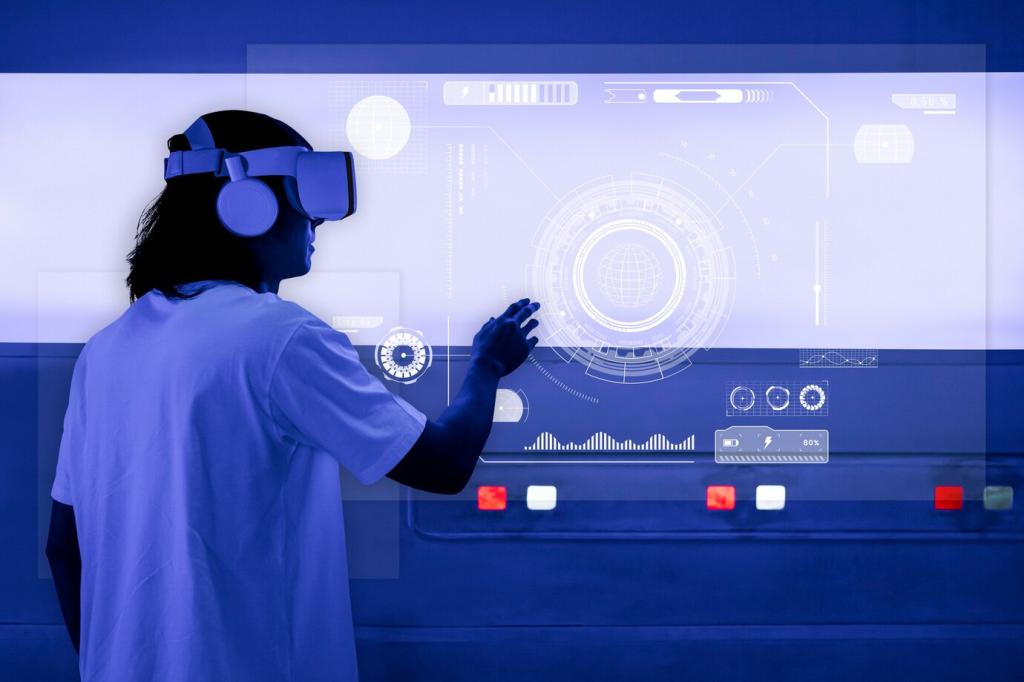
Smart Home Automation Innovations in 2024
The year 2024 marks a transformative period for smart home automation, where cutting-edge technologies and intelligent solutions are becoming seamlessly woven into the fabric of everyday living. From autonomous energy management to adaptive security systems, breakthroughs in AI, connectivity, and device interoperability are redefining what it means to live in a truly smart environment. Homeowners are experiencing unprecedented convenience, personalization, and efficiency, powered by the latest advancements in automation. In this comprehensive overview, we explore the most significant innovations defining smart homes in 2024, examining how they are making life safer, greener, and more comfortable for people around the globe.
Adaptive Voice Assistants
Voice assistants have evolved beyond basic command recognition, leveraging context-aware algorithms and natural language processing to interpret nuanced instructions. In 2024, these AI-driven assistants recognize not just words but intent, mood, and routine, proactively suggesting actions or changes in the environment. They tailor reminders, recommendations, and adjustments based on the homeowner’s schedule, health data, and even social interactions, fostering a uniquely personalized connection between user and home.
Predictive Automation
Homes now employ predictive analytics to optimize daily routines and device interactions. Instead of relying on static programming, systems learn patterns of movement, usage, and preference through continuous observation. For example, lighting and climate control anticipate needs before commands are given, adjusting settings in advance of your arrival or departure. This proactive approach delivers comfort and efficiency while minimizing manual intervention, making everyday living effortlessly streamlined.
Energy Efficiency and Sustainability
Intelligent Grid Integration
Smart homes in 2024 are deeply integrated with local and regional energy grids. Through intelligent controllers, homes dynamically adjust usage patterns based on real-time pricing, energy demand, and grid capacity. Systems strategically run appliances during low-cost periods and can even trade surplus energy generated by solar panels. This symbiotic relationship between homes and power grids not only benefits homeowners but contributes to overall grid stability and sustainability.
Automated Climate Control
Advanced climate systems utilize machine learning to deliver precise temperature and humidity regulation tailored to individual rooms and occupant preferences. They account for factors such as weather forecasts, occupancy, and time of day, adjusting settings to maximize comfort while minimizing energy waste. Smart vents, windows, and blinds coordinate automatically, ensuring that every area maintains optimal efficiency without sacrificing convenience.
Water Usage Optimization
Water management now falls under the purview of smart home platforms, with innovations ranging from adaptive irrigation systems to leak detection and water-saving fixtures. By analyzing usage patterns and environmental conditions, homes automatically adjust watering schedules for gardens and lawns, spot inefficiencies, and notify owners of potential leaks or overuse. This holistic approach not only conserves water resources but protects properties from costly damage and supports eco-friendly living.
Enhanced Home Security and Privacy
AI-Enhanced Surveillance
Surveillance systems now utilize AI-driven analytics to distinguish between routine activity and potential threats, greatly reducing false alarms. Cameras and sensors recognize faces, analyze behaviors, and identify anomalies in real time, sending alerts only when something truly warrants attention. Integration with emergency services and homeowner devices ensures rapid, coordinated responses to any security incident, delivering peace of mind with minimal intrusion.
Biometric Access Control
Physical access to smart homes is managed through multi-factor biometric authentication, including facial recognition, voiceprints, and fingerprint scanning. These systems grant personalized access rights to family members, guests, or service providers, while maintaining detailed logs for security review. Temporary digital keys can be issued securely and revoked instantly, eliminating concerns about lost keys or unauthorized entry and simplifying day-to-day interactions.
Privacy-First Automation
Protecting personal data has become central to smart home security. Automation systems now feature on-device AI processing for most tasks, minimizing the transmission of sensitive information to cloud servers. Homeowners can control what data is collected, stored, or shared, benefiting from transparency and robust encryption. Granular privacy controls allow customization for each device, balancing convenience and safety according to individual comfort levels.

Smart Kitchens and Culinary Automation
AI-Driven Meal Planning
Smart kitchens now feature AI-powered meal planning that takes dietary preferences, nutritional goals, and ingredient availability into account. Voice assistants and dedicated apps seamlessly integrate with grocery delivery services, offering personalized suggestions for weekly menus and automatically generating shopping lists. As a result, homeowners save time, avoid food waste, and maintain healthy eating habits tailored to their unique needs.


Automated Cooking Appliances
The latest generation of kitchen appliances includes connected ovens, stovetops, and refrigerators equipped with sensors and learning algorithms. These devices adjust cooking times, temperatures, and settings based on recipe requirements and user feedback, ensuring perfect results every time. Remote monitoring, step-by-step guidance, and self-cleaning capabilities enhance convenience, while safety features like automatic shutoff and motion detection contribute to peace of mind.
Advanced Healthcare Integration
Continuous Health Monitoring
Wearables and non-invasive sensors embedded throughout the home provide ongoing health insights, tracking metrics like heart rate, sleep quality, and air quality in real time. These systems can detect deviations from established health baselines and deliver personalized feedback to residents or designated caregivers. With early warning capabilities, homeowners can proactively address potential concerns, reducing the risk of serious health issues.
Remote Consultations and Telemedicine
Smart home automation now includes dedicated spaces or devices for secure video consultations with healthcare providers. Scheduling, privacy controls, and integration with digital medical records are streamlined for ease of use. Residents can attend regular checkups, share vital statistics, and receive treatment recommendations without leaving their homes—a boon for the elderly, those with chronic conditions, or anyone seeking convenient access to care.
Emergency Response Automation
In case of medical emergencies, smart homes can automatically alert emergency services, unlock doors for responders, and provide up-to-date health information. Fall detection sensors, smoke and gas alarms, and panic buttons ensure rapid intervention while minimizing false positives. The result is a safer environment for vulnerable populations and peace of mind for families, knowing that help is always within reach.
Immersive Home Entertainment Experiences
Smart homes feature adaptive media zones that automatically transform rooms into cinemas, concert halls, or gaming arenas. Lighting, sound, and screen settings respond to the content being played, adjusting ambiance, acoustics, and display dynamics for a truly captivating experience. Integration with occupancy sensors ensures devices activate or power down based on who enters or leaves, creating a seamless blend of energy efficiency and excitement.
Augmented reality (AR) and virtual reality (VR) systems are now mainstays of the modern smart home. Family members can immerse themselves in virtual worlds for gaming, education, or fitness, while automated controls synchronize environment lighting, haptics, and sensory feedback for heightened realism. Smart home ecosystems facilitate effortless transitions between work, learning, and leisure—making entertainment naturally engaging and multidimensional.
AI algorithms study family viewing patterns, preferences, and even the emotional tone of gatherings to suggest tailored content. Movie nights, music playlists, or gaming sessions are automatically organized and presented, taking the guesswork out of what to watch or play next. This hyper-personalized entertainment approach not only delights but also brings households closer together through shared, memorable experiences.
Intelligent Home Office and Productivity Tools
Smart Lighting and Climate for Focus
Automated lighting and climate systems tailor brightness, color temperature, and room conditions in real time to support concentration and comfort. Sensors and AI models detect when occupants are working and adjust environments automatically, counteracting eye strain, fatigue, or distractions. These intelligent adjustments foster a healthier, more productive workspace, accommodating individual preferences with remarkable precision.
Noise Management and Acoustic Zoning
Sound is strategically managed in modern smart homes to support productivity. Acoustic zoning technology isolates home offices from disturbances such as household noise or street traffic. Active noise cancellation and sound masking can be triggered automatically based on the work schedule, while alerts and calls are intelligently prioritized so that important communications come through without disrupting deep work.
Collaboration and Communication Tools
Advanced home automation platforms integrate seamlessly with virtual conferencing and productivity suites. Smart displays, microphones, and cameras optimize their settings for meetings, minimizing background distractions and maximizing audio and video clarity. Automated scheduling, task reminders, and digital assistant support help remote workers maintain discipline and organization, making the home office a powerhouse of efficiency and collaboration.
